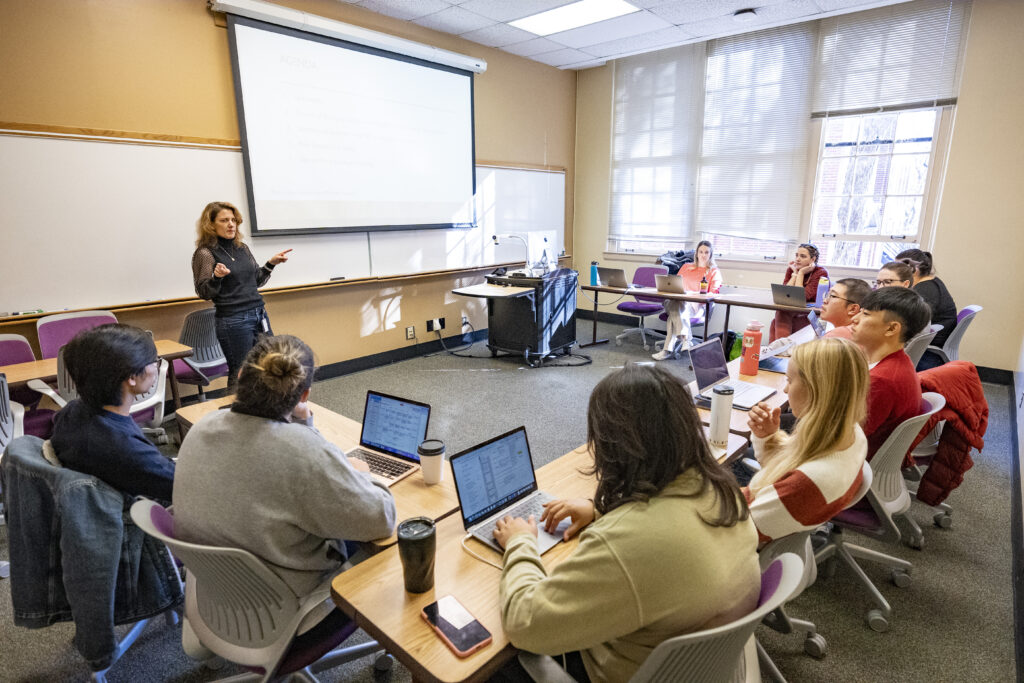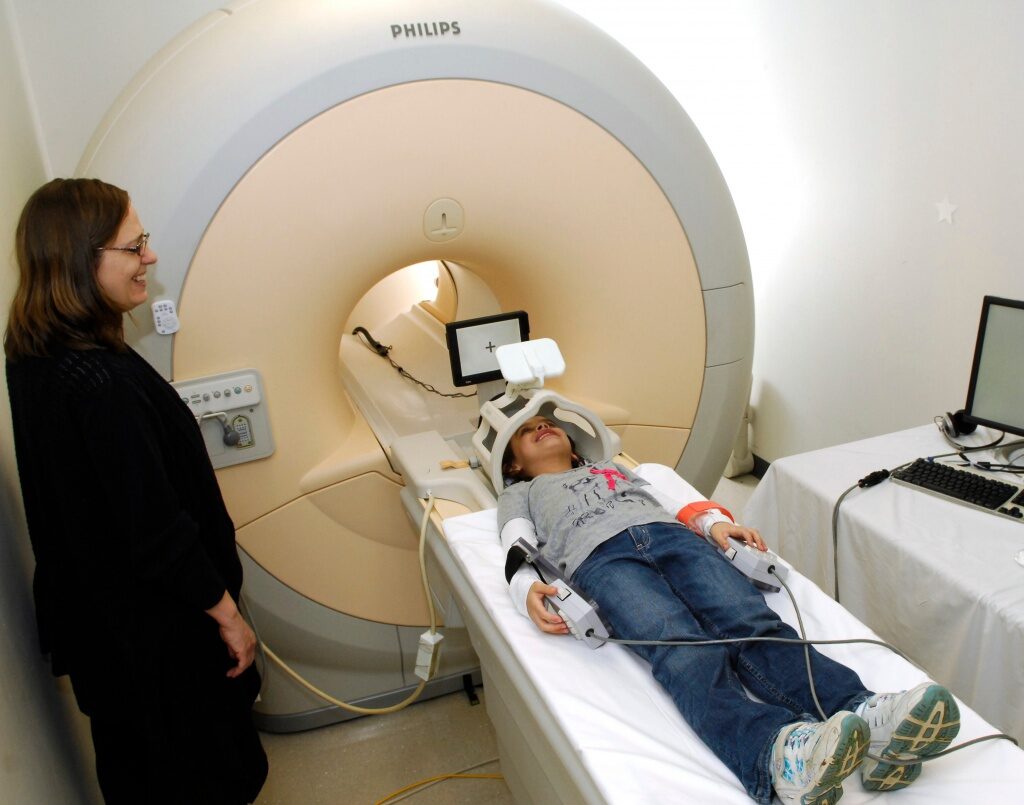
By Leah Mann
Have you ever wondered how your brain learned to read the very words of this article? Or how you comprehend the numbers listed on each page of Vestigo?
These questions provide a glimpse into the field of educational neuroscience, a realm of cognitive neuroscience focused on the neural mechanisms of learning. While such inquiries are compelling on their own, it is the answers and inherent application of the findings that truly inspire educational neuroscientists.
It was this hope to understand how the brain changes over development and how this process relates to learning outcomes that inspired the launch of the educational neuroscience Ph.D. program at Vanderbilt nearly 10 years ago.
The interdisciplinary program was established in 2012, bringing together the Vanderbilt Brain Institute and the Peabody College of Education and Human Development. The VBI serves as one of 10 trans-institutional Basic Sciences entities and is devoted to neuroscience research and education. Lisa Monteggia, Barlow Family Director of the VBI and professor of pharmacology, credits the “seamless and exceptionally synergistic” collaboration between the VBI and Peabody with “bringing educational neuroscience and related fields to the attention of the broader neuroscience community.”

In the decade since its inauguration, seven students have graduated and an additional five are currently enrolled. At present, seven VBI training faculty members serve as educational neuroscience faculty. They are Laurie Cutting, professor of special education; James Booth, Patricia and Rodes Hart Professor of psychology and human development; Eric Wilkey, assistant professor of educational neuroscience; Sophia Vinci-Booher, assistant professor of psychology and human development; Kathryn Humphreys, associate professor of educational neuroscience; Mark Wallace, Louise B. McGavock Chair and professor of psychology; and Autumn Kujawa, associate professor of psychology and human development.
According to Cutting, this program is the “nexus of both the powerful, highly [regarded] college of education and the neuroscience expertise.” Historically, the majority of educational neuroscience research has been dedicated to the mechanisms, neurobiology, and difficulties associated with reading. For example, Andrea Burgess, a fifth-year educational neuroscience Ph.D. candidate, has been working with Cutting on a longitudinal study to determine the way in which features of text may modulate demands during reading and to predict which children will require intervention.
Yet, Cutting has expanded her lab’s focus beyond reading and disabilities to broadly address child development and academic outcomes. Emily Harriott, a third-year student in the program, has spent time studying the association between neurofibromatosis type 1, a congenital disorder characterized by tumors on nerve cells, and cognitive outcomes.
Wilkey, who was part of the very first cohort of educational neuroscience Ph.D. students at Vanderbilt, conducts math-focused research. As a graduate student, Wilkey worked with Gavin Price, former associate professor of psychology and human development at Peabody, to investigate the role of executive function systems, specifically inhibition, in basic number processing. Wilkey deter-mined that processing is “not just about the basic concepts of numbers but also about managing the flow of information and dealing with numbers in the face of conflicting information.” Wilkey’s lab is continuing down this avenue, exploring other executive functions—the cognitive skills that control behavior, such as working memory—and studying how they are integrated with mathematical thinking.

In his last few months as a postdoctoral fellow, Andrew Lynn, working with both Cutting and Wilkey, used functional magnetic resonance imaging, a noninvasive way to measure and map brain activity, to examine the relationship between individual differences in executive functions and symbolic magnitude comprehension—the ability to map digits to quantities and compare numbers. “Each child will enter kindergarten with a different level of understanding, begging the question of how kids are leveraging cognition to learn magnitudes,” Lynn said.
Another area of research spearheaded by Vanderbilt is handwriting. Recent hire Vinci-Booher uses handwriting to understand how actions are related to brain function and structure in early reading development. Vinci-Booher designed an MRI-compatible digital tablet that allows her to study brain function during handwriting using neuroimaging. Her work suggests that activities that link vision and action, such as handwriting, may be important for changes in brain function associated with early reading development and that brain structure may underlie individual differences in early learning outcomes.
Vanderbilt’s educational neuroscience program offers not only the opportunity to be trained by world leaders in the field, but also to build a community. Although Harriott had set her sights on Vanderbilt so she could work with Cutting, she was pleased to also work with “professors who really care about their research and their students.”
Alisha Compton, a third-year student in the program, agrees. “There is something special about the space at Vanderbilt,” Compton said. Although she is primarily investigating mechanisms underly-ing reading skill and anxiety symptoms with her mentor, Booth, she has also collaborated with other faculty members.
These collaborations and interdisciplinary efforts are at the heart of educational neuroscience research at Vanderbilt. According to Wilkey, there are “different tiers of analysis that the research wheel relies on, requiring us to leverage expertise across domains.”
The ability to do just that is what makes Vanderbilt a leader in the realm of educational neuroscience. “This program constructs a new dimension within traditional neuroscience studies while addressing a critical societal need in neuroscience-based education initiatives,” Monteggia said.